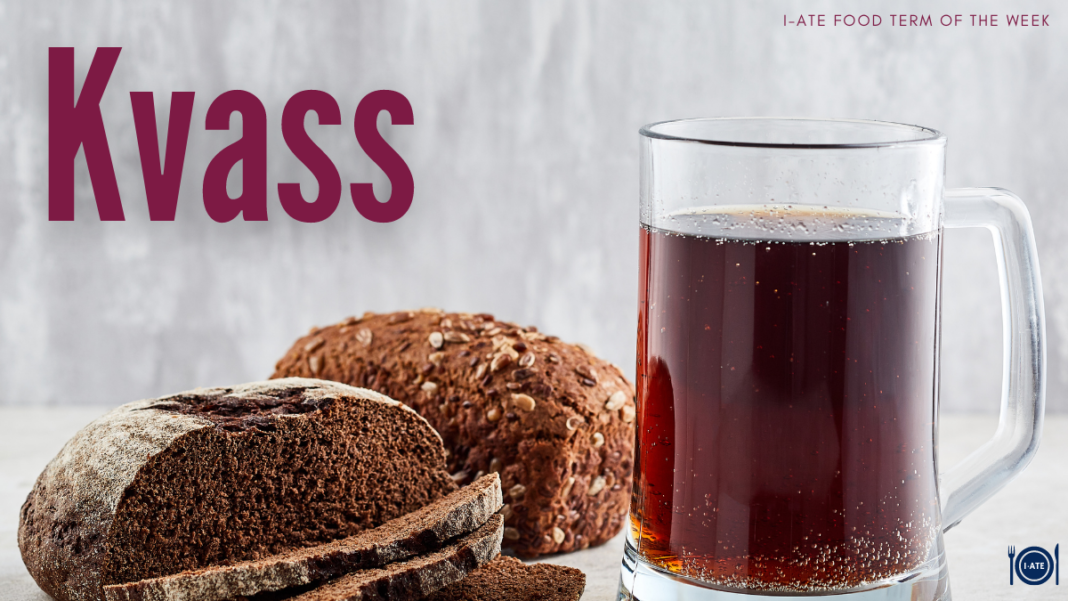While in Western Europe children line up for drinking lemonade during the summer holidays, kids in Ukraine and Russia queue up for kvass — a legendary beverage whose roots lead us to the times of ancient Rus’.
According to the Merriam-Webster Dictionary, kvass is a slightly alcoholic beverage of Eastern Europe made from fermented mixed cereals and often flavoured. The modern version of kvass is famous for its unique sour taste.
The history of kvass
The first mentioning of kvass dates back to the year 989. However, 8,000 years ago, a drink made from barley grains, something between modern kvass and beer, was invented by the ancient Egyptians.
By the 15th century, kvass had become incredibly widespread in Russia. There were about 500 varieties of this drink. It could be sweet, sour, with mint, raisins, herbs, fruits, spices and much more. At that time, kvass contained more alcohol than beer. However, do not confuse the modern version of kvass with traditional beer: kwass can contain little or no alcohol. Some consider this drink to be good for your health, as it awakens appetite, refreshes, has only a few calories and increases metabolism. A cold soup okroshka, beloved in Ukraine and Russia, is also made with kvass.
Etymological notes on kvass
The word kvass derives from the Proto-Indo-European base *kwat-, meaning ‘sour’ and is written and pronounced similarly across several Slavic countries. In Ukrainian, it is called квас/хлібний квас/сирівець (kvas/khlibny kvas/syrivets); in Belarussian, Russian and Serbian it is called квас (kvas); in Polish: kwas chlebowy (‘bread kvass’); in Latvian: kvass; in Romanian: cvas; in Hungarian: kvasz; in Chinese: 格瓦斯/克瓦斯, géwǎsī/kèwǎsī. Non-cognates of the word are present in Latvian dzērsis (‘beverage’), Lithuanian gira (‘beverage’), Estonian kali, and Finnish kalja.
Kvass across countries
In summertime, when heatwaves hit large areas of Ukraine and Russia, bringing temperatures up to 40 degrees, this popular beverage immediately starts appearing on the streets. Many people buy fresh kvass, poured in typical yellow barrels, and enjoy its taste under the shade of trees by the drink stand. One can also buy a bottle of kvass in any local supermarket; however, authentic barrel kvass tastes much better!
The yellow kvass barrel is a sour-sweet childhood memory for several generations. Soviet kids used to adore kvass that costed only 3 kopeck. At the time of the Soviet Union, in the markets there were no Pepsi, Coca-Cola or Fanta, and kvass quickly gained popularity due to the absence of competitors.
In other Slavic countries, this beverage is still very popular. In Latvia, due to the dissolution of the Soviet Union in 1991, street vendors disappeared from the streets, as the new health law did not allow selling kvass in the streets. However, this bottled soft drink is still available in the supermarkets. In Poland, kwass may have appeared in the 10th century due to trade relationships between Kiewan Rus’ and the Kingdom of Poland. Despite it not being as popular in Poland as it was in the neighbouring Ukraine, kwas chlebowy can be easily found in every Polish supermarket. In Lithuania, kvass is widely known as gira, and many restaurants in Vilnius produce their own gira.
References
NPR. 2021. America, Are You Tough Enough To Drink Real Russian Kvas? [ONLINE] Available at: https://www.npr.org/sections/thesalt/2013/08/14/204859046/america-are-you-tough-enough-to-drink-real-russian-kvas?t=1627985688922 [Accessed 6 August 2021].
Wikipedia. 2021. Kvass. [ONLINE] Available at: https://en.wikipedia.org/wiki/Kvass#:~:text=Kvass%20originated%20at%20the%20time,at%20least%20the%20Middle%20Ages.&text=Kvass%20was%20invented%20by%20the,most%20popular%20among%20East%20Slavs [Accessed 6 August 2021].
The Village. 2021. История русского кваса. [ONLINE] Available at: https://www.the-village.ru/food/sostavnye-chasti/313955-kvas [Accessed 6 August 2021].
История вещей. 2021. [ONLINE] Available at: http://история-вещей.рф/napitki/istoriya-kvasa.html [Accessed 6 August 2021].
Гадяч онлайн. 2021. Історія квасу. [ONLINE] Available at: http://gadyach.pl.ua/blogs/mo-notatki/-stor-ja-kvasu.html [Accessed 6 August 2021]

Olena Khomiakova is a Schuman Communication Trainee Terminology Coordination Unit. Currently she is enrolled as a Master student in Learning and Communications in Multilingual and Multicultural Contexts at the University of Luxembourg.

